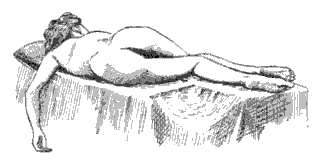
What Is Sims’ Position and When Should It Be Used?
When positioning patients, some of the position names are less descriptive than others. Sims’ position is one of those. There are a number of scenarios in which Sims’ position is ideal for a patient. Here, we will detail the position, its uses, and its benefits.
What Is Sims’ Position?
Sims’ position is sometimes referred to as a semi-prone position as it is halfway between lateral (lying on the side) and prone (lying on the stomach). Most often, Sims’ position refers to lying on the left side, so sometimes you may hear it called left lateral Sims’ position.
How to Achieve Sims’ Position
When the patient is lying on their left side:
- The left leg (on bottom) is straight.
- The right leg (on top) is bent.
- The left arm (on bottom) rests behind the body with the torso tilted.
- The right arm (on top) rests in front, bent at the elbow and shoulder.
It is important to cushion pressure points like the knee, head, and elbow with pillows or padding if the patient will stay in this position.

Retrieved from: https://en.wikipedia.org/wiki/Sims%27_position
Common Appropriate Uses
Sims’ position is commonly used when administering an enema because it allows for visualization of the perineum and the descending colon is lower, which allows the fluid to flow more easily. It is also used during pregnancy and childbirth.
Another Important Use
For several reasons, this position is often helpful for patients that are unconscious or paralyzed. For patients that cannot move and reposition themselves, Sims ‘position reduces the pressure on the hips and the sacrum, which are often responsible for decubitus ulcers. Additionally, the tilt of the chest and position of the head allows for secretions to drain out of the mouth with a much lower risk of aspiration.

Keep Reading

National Council Licensure Examination-Practical Nurse Blog
How Long Should I Study for the NCLEX-PN?
For aspiring nurses, the NCLEX-PN is a critical hurdle on the path to b…

National Council Licensure Examination-Practical Nurse Blog
How to Become an LPN
Would you like to average $30 dollars per hour in a rewarding full-time…

National Council Licensure Examination-Practical Nurse Blog
What Is the Difference between Dementia and Alzheimer’s?
Many people use the terms dementia and Alzheimer’s interchangeably, but…